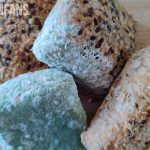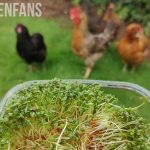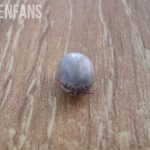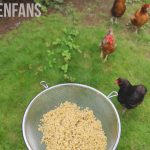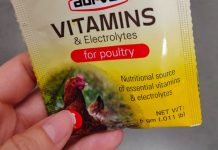Top 10 Pumpkins for Chickens (And One to Avoid)
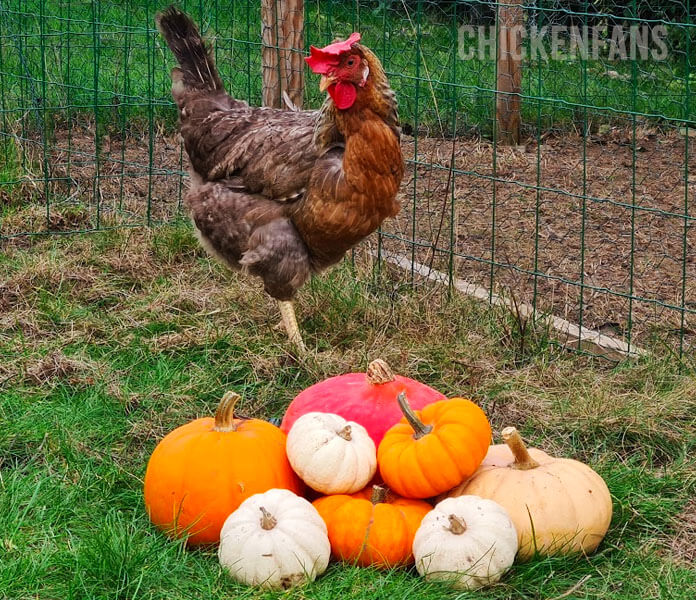
Chickens love pumpkins! Both the flesh and seeds are nutritional powerhouses for your backyard flock. If you are preparing some jack-o’-lanterns for Halloween, keep some flesh and seeds aside for your birds.
We are not exaggerating.
A small cup of pumpkin cubes already provides more than 200% of a chicken’s daily vitamin A intake. We’ve written an in-depth study on all the health benefits that pumpkins bring to your flock.
Here are 10 pumpkin varieties your chickens will love.
1. Hokkaido
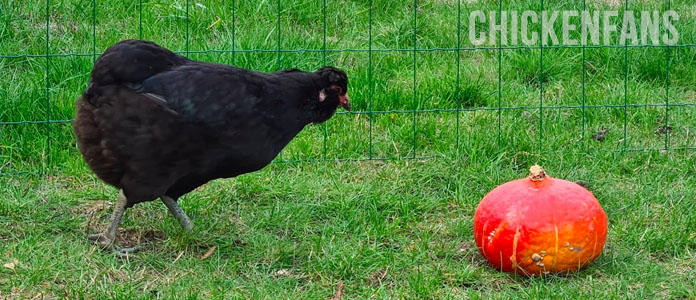
The Japanese squash is orange on the outside and bright and tasty on the inside. They have a mild sweet taste with a nutty accent and can be used for eating, soup and other dishes.
Hokkaido pumpkins weigh up to 4,5 pounds, making them easy to carry around, even for kids. They are great for Halloween and have the ideal size for a small backyard flock.
2. Munchkin Pumpkins
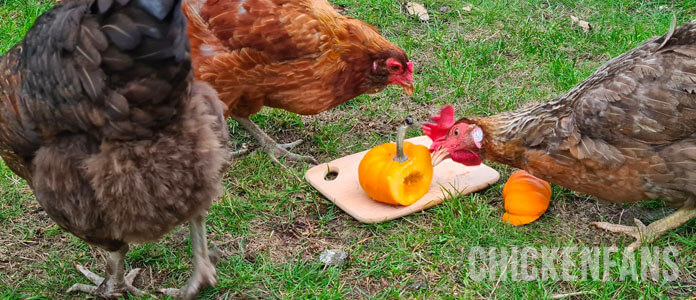
The munchkin pumpkin is a small variety that’s only about 3 to 4 inches. Munchkins are commonly used as Halloween decorations. They have a bright orange color and are deeply ribbed.
Although they are adorable, most people toss them in the bin since the skin is hard and they don’t have a lot of flesh. However, these miniature pumpkins have plenty of seeds that your chickens love. When all the seeds are gone, they will gobble up the rest of the pumpkin.
3. Spaghetti Squash
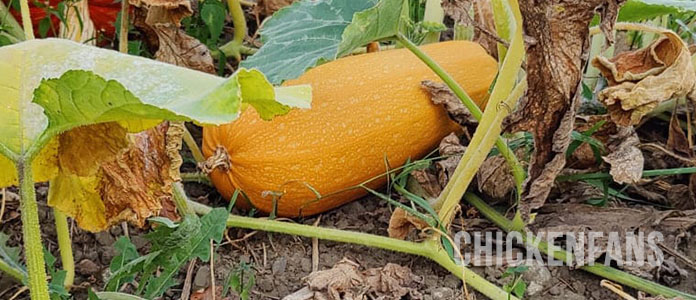
Not all members of the pumpkin family are round-shaped. Spaghetti squash is a winter squash that’s a bit longer, with yellow-to-orange skin. The deeper the orange, the more beta-carotene the squash holds.
The spaghetti squash’s center contains many seeds that are nutritional bombs for your backyard flock.
4. Baby Boo Pumpkins
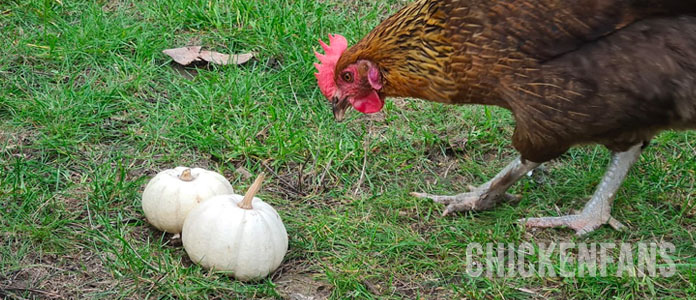
The baby boo pumpkin is a white, decorative mini pumpkin that’s typically used in Halloween decorations. However, they are perfectly edible.
Baby boo pumpkins are white inside and have a tender, sweet, nutty flavor. Technically, the baby boo pumpkins are acorn squash.
5. Jack O’ Lantern
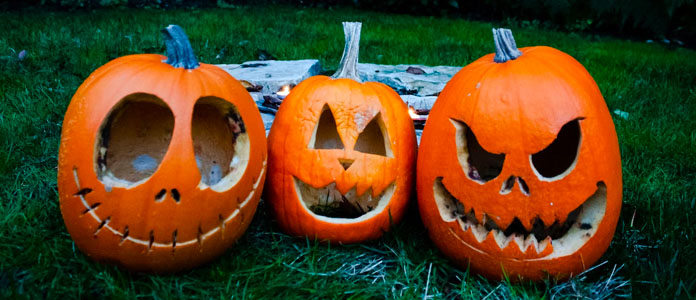
This list would never be complete without the good old Jack O’ Lantern. It’s one of the most common Halloween pumpkins around. It’s used for several Halloween dishes, great for carving, and ideal for pumpkin soups.
Many chicken keepers create small carvings in the dense skin of the pumpkin and let the chickens carve the rest of the lantern.
6. Big Max Pumpkin
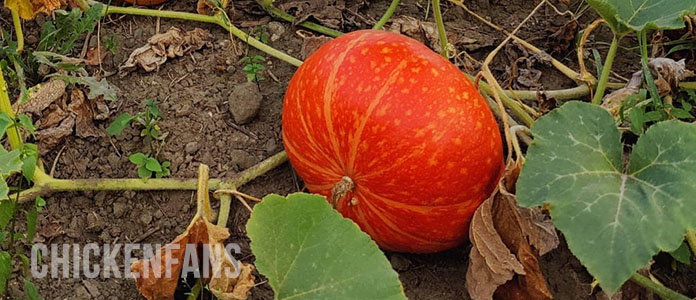
Big Max pumpkins of the species Cucurbita maxima can grow over 100 pounds. They have bright orange skin and yellow-orange flesh.
Due to their big size, they are typically used as an exhibition pumpkins during Halloween. However, they are perfectly edible and full of beta-carotene and vitamins. If you are carving a Big Max, keep the leftovers for your backyard flock.
7. Long Island Cheese
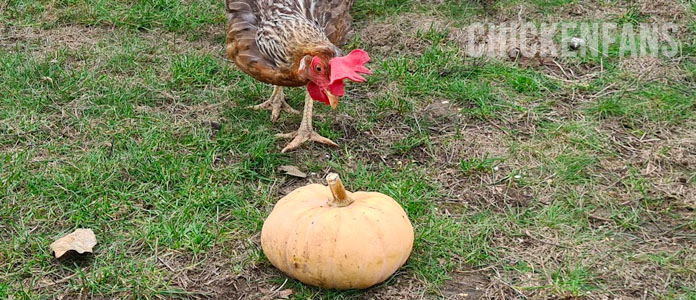
The Long Island Cheese pumpkin is an heirloom squash from the US East Coast. It’s a popular pumpkin for pies with a buff color that makes it look like a big wheel of cheese.
The pumpkin has firm orange flesh that is rich in vitamins and minerals.
8. Butternut
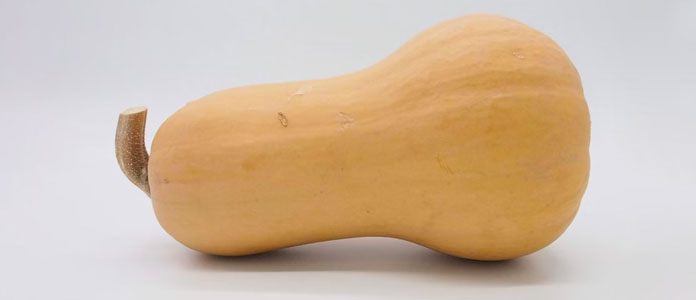
The butternut squash is one of the most popular pumpkins around and is used in many cuisines. Cooks use it for many dishes, soups, and pumpkin pies. Butternuts contain an insane amount of vitamin A.
A small cup (100g) of buttercup cubes contains 10600 IU of vitamin A, which is more than 350% of the daily recommended intake for laying hens. Vitamin A is essential for several metabolic processes and helps chickens see in dim light and shady environments.
9. Jarrahdale Pumpkin
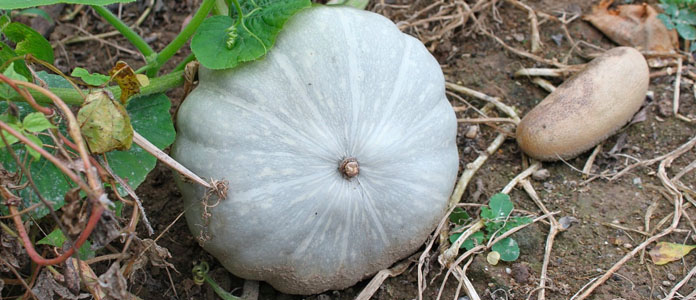
The Jarrahdale pumpkin is an all-round heirloom decorative pumpkin that’s also suitable for the kitchen. It’s perfect for sweet and savory dishes, in the oven, for soup, or baking pies.
The pumpkin has grey and blueish skin, which makes it stand out among the other pumpkins in a pile. This mid-size Australian pumpkin has a fruity and mildly sweet taste that your chickens will love.
10. Fairytale Pumpkins
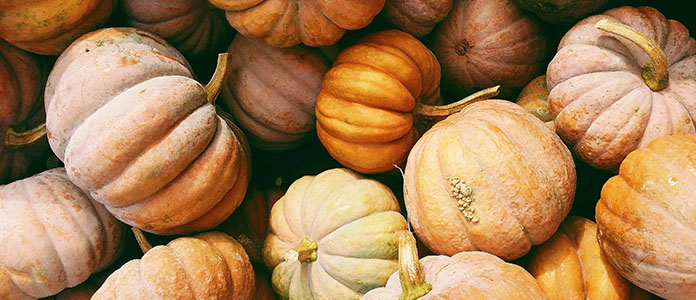
The Fairytale pumpkin is a big traditional French pumpkin that’s heavily ribbed. The pumpkins can get up to 20 pounds and are popular in Halloween decorations.
The bright orange flesh is sweet and is a popular ingredient for casseroles, desserts, soups, and stews. Fairytales are similar to reddish Cinderella pumpkins and Rouge Vif d’Étempes, but they are orange and have more flavor. However, your chickens will gobble up all of them.
The One To Avoid: Wild-Growing Pumpkin
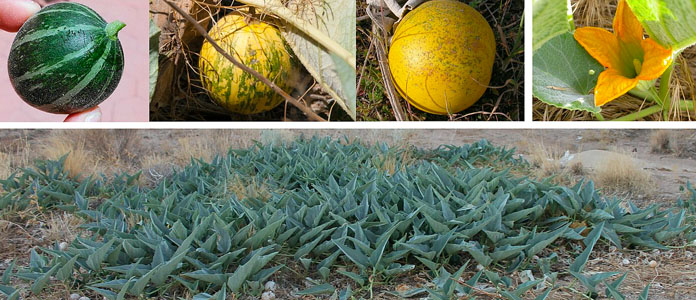
Avoid feeding chickens with wild-growing pumpkins. Wild pumpkins such as Buffalo Gourd are downright bitter. The taste is so bitter because they contain cucurbitacin, a toxic chemical that ensures insects won’t eat the fruit.
Eating a bitter pumpkin or gourd can lead to food poisoning for your chickens. If you ever taste a bitter pumpkin, don’t swallow it, stop eating, and definitely don’t throw it over the chicken’s fence!
Years of selective breeding have eliminated almost all bitterness in commercially available pumpkins and pumpkin seeds. All the pumpkins you get from the grocery store are perfectly edible. Even decorative gourds that are not meant for consumption are usually edible.
Further Reads
Other pumpkin-related articles:
- Can chickens eat pumpkins? – an in-depth article on all the nutrients and health benefits of pumpkins for chickens
- Can chickens eat zucchini? – the top health benefits of zucchini (courgettes), a summer squash
- Can chickens eat cucumber? – similar to zucchini, the cucumber comes with many health benefits
- Can chickens eat tomatoes? – tomatoes are okayish, but they contain the slightly toxic tomatine
If you are feeding table scraps from pumpkin dishes, avoid feeding your chickens onions.
If you want to learn more about chicken feed, please consult our ‘Chicken Food Page‘ to go and see every specific food article we address, including all articles on what chickens can and can not eat. Or go to our listicle food summary on ‘The Classroom‘.
